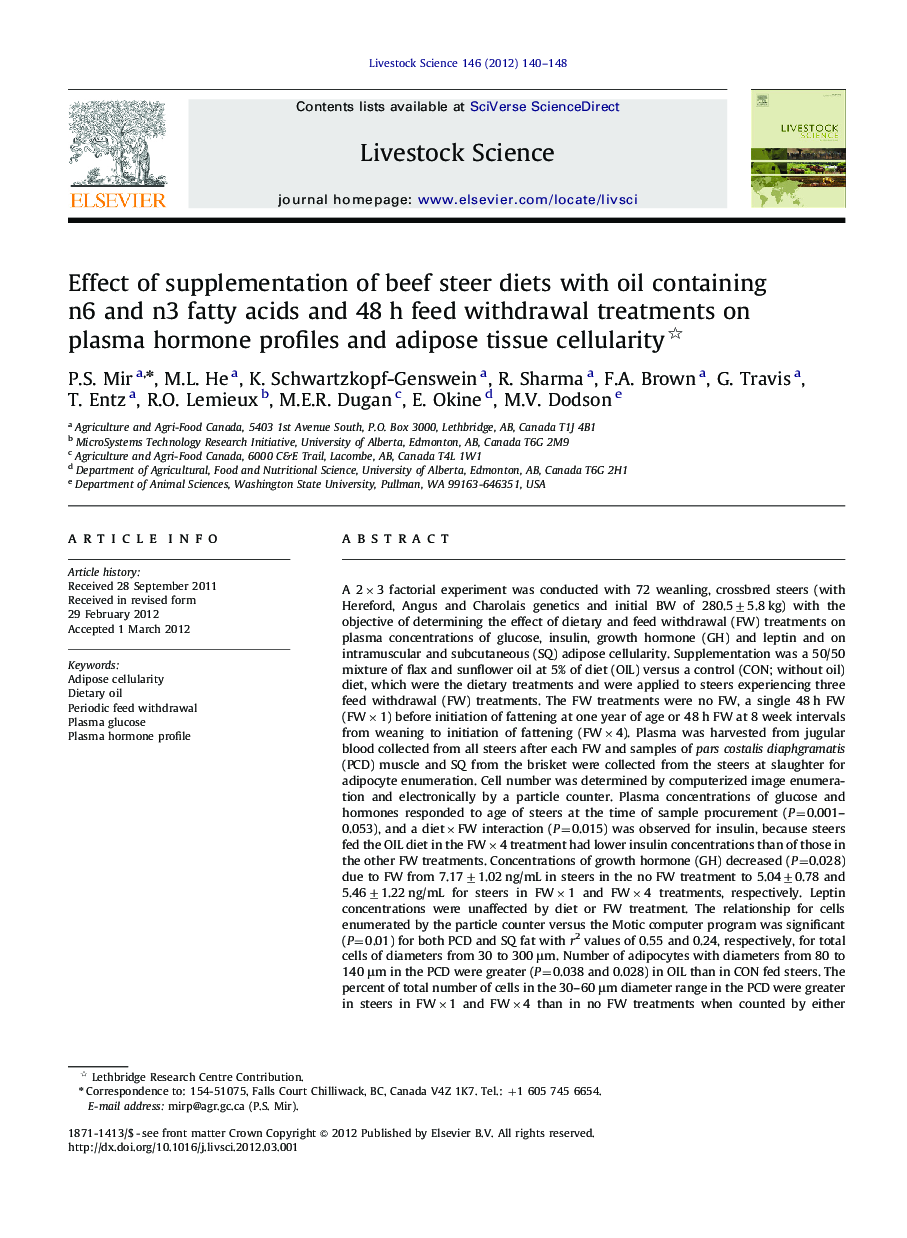| Article ID | Journal | Published Year | Pages | File Type |
|---|---|---|---|---|
| 5790821 | Livestock Science | 2012 | 9 Pages |
Abstract
A 2Ã3 factorial experiment was conducted with 72 weanling, crossbred steers (with Hereford, Angus and Charolais genetics and initial BW of 280.5±5.8 kg) with the objective of determining the effect of dietary and feed withdrawal (FW) treatments on plasma concentrations of glucose, insulin, growth hormone (GH) and leptin and on intramuscular and subcutaneous (SQ) adipose cellularity. Supplementation was a 50/50 mixture of flax and sunflower oil at 5% of diet (OIL) versus a control (CON; without oil) diet, which were the dietary treatments and were applied to steers experiencing three feed withdrawal (FW) treatments. The FW treatments were no FW, a single 48 h FW (FWÃ1) before initiation of fattening at one year of age or 48 h FW at 8 week intervals from weaning to initiation of fattening (FWÃ4). Plasma was harvested from jugular blood collected from all steers after each FW and samples of pars costalis diaphgramatis (PCD) muscle and SQ from the brisket were collected from the steers at slaughter for adipocyte enumeration. Cell number was determined by computerized image enumeration and electronically by a particle counter. Plasma concentrations of glucose and hormones responded to age of steers at the time of sample procurement (P=0.001-0.053), and a dietÃFW interaction (P=0.015) was observed for insulin, because steers fed the OIL diet in the FWÃ4 treatment had lower insulin concentrations than of those in the other FW treatments. Concentrations of growth hormone (GH) decreased (P=0.028) due to FW from 7.17±1.02 ng/mL in steers in the no FW treatment to 5.04±0.78 and 5.46±1.22 ng/mL for steers in FWÃ1 and FWÃ4 treatments, respectively. Leptin concentrations were unaffected by diet or FW treatment. The relationship for cells enumerated by the particle counter versus the Motic computer program was significant (P=0.01) for both PCD and SQ fat with r2 values of 0.55 and 0.24, respectively, for total cells of diameters from 30 to 300 μm. Number of adipocytes with diameters from 80 to 140 μm in the PCD were greater (P=0.038 and 0.028) in OIL than in CON fed steers. The percent of total number of cells in the 30-60 μm diameter range in the PCD were greater in steers in FWÃ1 and FWÃ4 than in no FW treatments when counted by either method. Provision of dietary oil and FW treatments had no effect on plasma metabolites and may be the reason for the absence of a response in total adipocyte numbers due to FW.
Keywords
Related Topics
Life Sciences
Agricultural and Biological Sciences
Animal Science and Zoology
Authors
P.S. Mir, M.L. He, K. Schwartzkopf-Genswein, R. Sharma, F.A. Brown, G. Travis, T. Entz, R.O. Lemieux, M.E.R. Dugan, E. Okine, M.V. Dodson,
